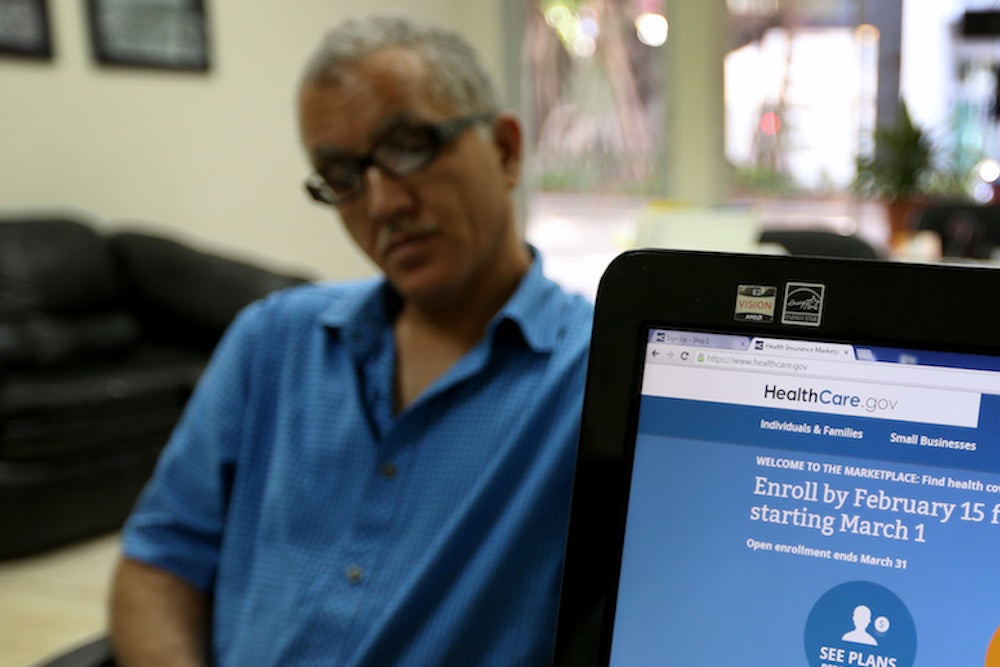
The latest Obamacare enrollment figures got a pretty lukewarm reaction on Tuesday. One reason is that the number for February was lower than the number for January, creating an impression of waning interest. Here’s the lead from the Washington Post’s account:
The pace at which Americans signed up for health plans slowed last month in the fledgling federal and state insurance marketplaces, according to new government figures showing that slightly fewer than 1 million people enrolled in February.
The Obama administration said 943,000 Americans selected health plans, compared to 1.2 million in January.
The facts are right but the interpretation is not. The months HHS has been using for tabulation don’t correspond precisely to the calendar, because of state reporting methods and where weekends fall. As it turns out, “February” is actually February 2 through March 1. That’s 28 days. “January” is actually December 29 through February 1. That’s 35 days. Plug in the numbers, and you’ll see the average daily enrollment for January was 32,744 and for February it was 33,673. As you can see in the graph, the pace actually increased a bit. Among the very few who noticed were Charles Gaba of ACASingups.net and Sy Mukherjee of ThinkProgress.
The more important question, of course, is what the numbers look like after March 31, when open enrollment ends. The number should exceed 5 million by then. But it’s not clear by how much it will exceed 5 million. (Avalere consulting just announced that it was projecting the number will be 5.4 million.) Nor is it clear how many of those selecting plans will actually pay premiums, without which they will not actually be insured. (Anecdotal reports suggest that, so far, about a fifth of the people selecting plans are not paying premiums initially.)
No matter what, enrollment is likely to fall short of the Congressional Budget Office’s original projection of 7 million and quite possibly the revised estimate of 6 million. And that could reflect a combination of causes—everything from website problems to political resistance to the cost of the plans, which may simply make the coverage less attractive. On the other hand, enrollment of 5 million people ought to be enough for the system to sustain itself, though conditions will vary from state to state. And it's not like the projections were that scientific in the first place.
The real question of Obamacare is whether it bolsters economic security, improves health care quality and access, and slows down the rising cost of medicine. Raw enrollment numbers can help answer that question, but only in part.
Note: This item has been updated, both to add links and context.
